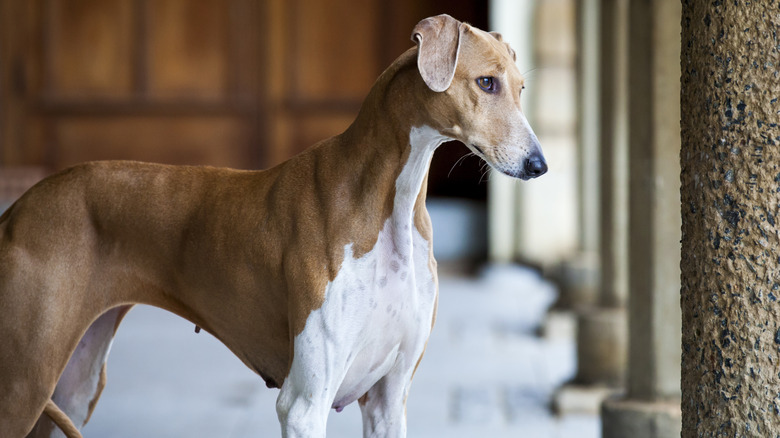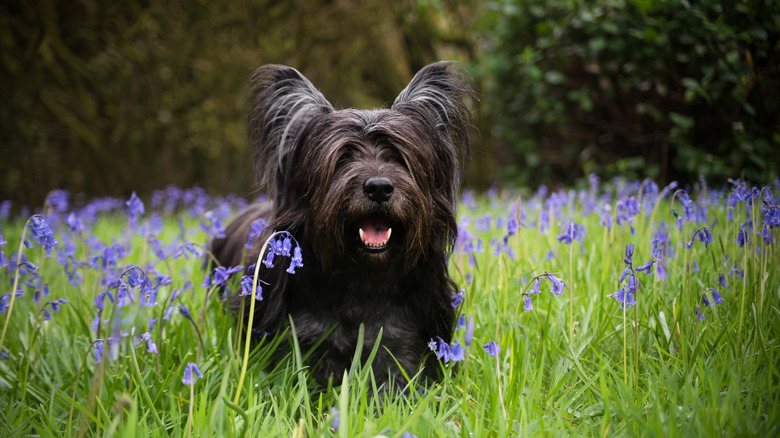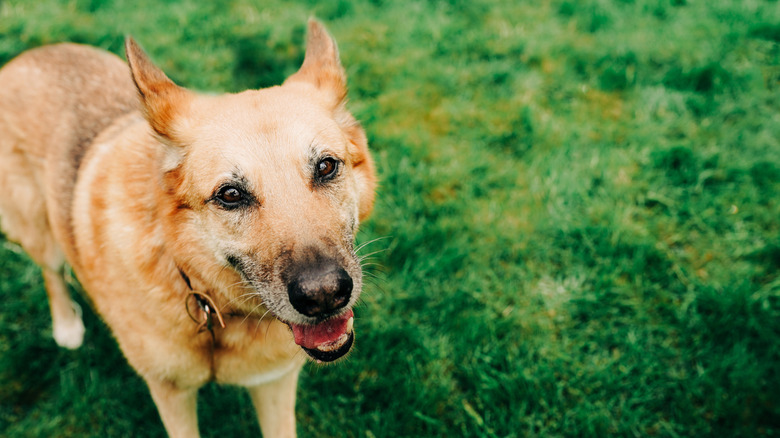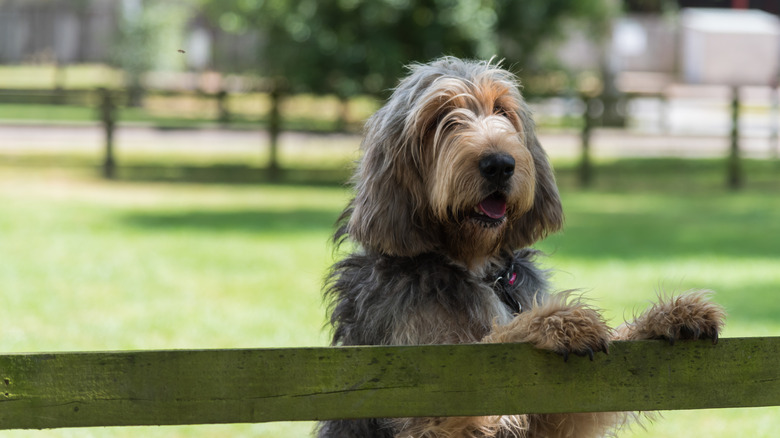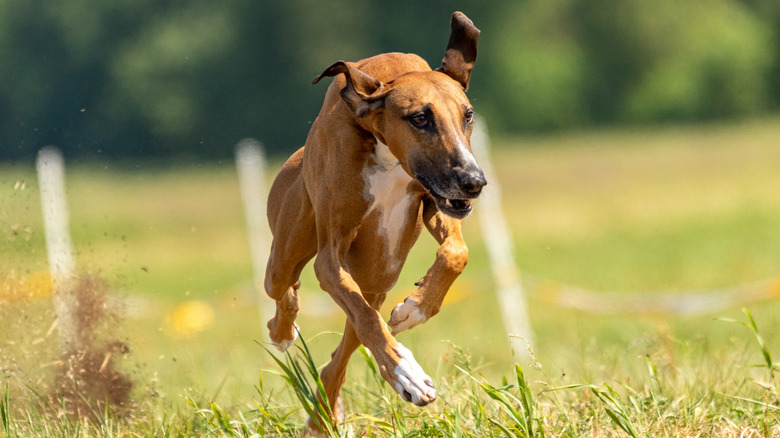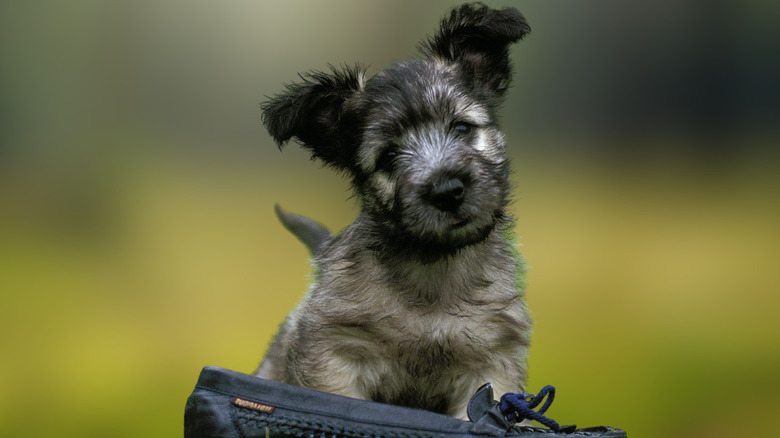Vulnerable Dog Breeds That Could Go Extinct If Humans Don't Take Action
People's long reliance on dogs for companionship and work has ingrained them into our culture like no other animal. Notably, dogs have been bred to suit specific roles throughout their existence. The American Kennel Club currently lists 201 registered breeds, not including popular crossbreeds and some niche breeds. With so many canines of all shapes and sizes worldwide, many overlook that some dog breeds no longer exist, and many still face extinction.
The challenges facing vulnerable dogs range from a lack of necessary support or breeding programs to career-specific pooches whose jobs are no longer needed. Although these breeds are considered vulnerable, there is still hope for many of them through ongoing recognition and efforts to prevent their extinction. Every good boy or girl deserves a loving home, and with humans taking action, these remarkable canines may still thrive one day and be pulled back from the edge of extinction.
The Skye terrier was once a favorite but is now a vulnerable breed
Hailing from the Isle of Skye in Scotland, from which it derives its name, the Skye terrier was initially bred to hunt badgers, foxes, and otters. However, the breed is also a beloved companion, known for being calmer than most other terrier breeds, and can be overly affectionate when properly socialized. The Skye terrier is also regarded as one of the American Kennel Club's most distinct-looking breeds, thanks to its long, luscious hair and feathered ears.
One particular Skye terrier has been immortalized in its native Scotland for its dedication to its owner. Greyfriars Bobby was the companion of night watchman John Gray, who died of tuberculosis in 1858. Greyfriars refused to leave the gravesite, staying beside his owner regardless of the weather until his passing in 1872. Greyfriars Bobby has been immortalized in the form of a statue, and his collar is kept in the Museum of Edinburgh, a testament to the breed's love and dedication.
Despite its strong work ethic, compassion, and stunning appearance, the Skye terrier has fallen out of fashion in favor of other popular terrier breeds. Once a favored dog among royalty, The Kennel Club in the UK only registered 71 new Skye terriers in 2024. The breed has seen a slight increase in popularity in the U.S., ranking 179th in 2024 with the American Kennel Club, up from 185th the previous year.
The Chinook was brought back from the edge of extinction, but remains vulnerable
It is not often that a breed is named after the first dog itself, but this breed can trace its origins back to a male dog named Chinook, born on January 17, 1917, in New Hampshire. Arthur Treadwell Walden bred Chinook to help him navigate the New Hampshire winters. He accomplished this through breeding Canadian sled dogs, huskies, and farm dogs to achieve a breed with a double coat that would handle the cold and a muscular build for hauling. Walden would make the dog popular, introducing the sport of dog sledding to the region with Chinook as his lead, and founding the New England Sled Dog Club in 1927.
In addition to their hard work, Chinooks are known for their loyalty and social nature. They thrive in busy homes or with other dogs. The breed can be very affectionate and, despite its working history, needs only moderate exercise to stay content.
Despite finding worldwide fame thanks to the many ventures of Walden and Chinook, Walden would fall on hard times and have to give up the dogs. It is believed that all Chinooks come from three of Walden's dogs; Jock, Hootchinoo, and Zembla. Since the 1940s, the breed's numbers have fluctuated, with the population facing extinction at several points. As of 2024, the American Kennel Club lists the Chinook as the 182nd most popular dog breed. However, there is still hope for the Chinook, with their number believed to be around 1,100, a far cry from the record low of 11 in 1981.
The otterhound is now one of the rarest dogs in the world
The otterhound is a hunting dog initially bred to track and kill otters. With its webbed feet and waterproof coat, the otterhound is adept at swimming. As a companion, it is known for being an overly affectionate, sometimes rambunctious giant, weighing between 80 and 115 pounds. An ideal family dog for a high-energy household, the otterhound offers an abundance of personality that makes it cherished by the few lucky enough to have one.
The otterhound began to fall out of favor due to the growing scrutiny of the cruel sport of otter hunting in the UK in the early 19th century. This led to its eventual ban in 1978, which was overdue, as packs of otterhounds were so successful in their hunting prowess that the otter almost went extinct. Despite its charming and high-energy persona, the otterhound has failed to find popularity and is now one of the rarest breeds.
In 2024, the American Kennel Club listed the otterhound as the 196th most popular breed out of 201. In its native U.K., only 42 new otterhounds were registered with The Kennel Club in 2024. Globally, it is estimated that there are only around 1,000 otterhounds left, making the breed's future of great concern for canine preservationists.
The African azawakh has very few numbers in the United States
While the azawakh's origins are unknown, they have played an essential role in their native sub-Saharan Africa as sight hounds for various tribes. The breed was developed for harsh desert climates and was used to protect livestock from predators, hunt, and serve as a companion animal to the region's people. Despite being exported to other countries like Yugoslavia and France, the breed has failed to find popularity outside of its native location. As a pet, the azawakh is known to be energetic, intelligent, and loyal, but it needs a proper environment to thrive. Azawakhs are not ideal dogs for inexperienced owners, limiting their appeal abroad beyond their scarcity.
The azakwakh is a relatively new registered breed, recognized by the American Kennel Club in 2019. It is currently ranked 192nd in popularity with the American Kennel Club. While it has been in the U.S. since 1988, there were only an estimated 150 in the country when the American Kennel Club recognized it. Worldwide, it is estimated that there are around 3,000, with the largest population in Africa. Given the challenges of raising the dog and the lack of numbers in the U.S., the breed remains rare and vulnerable.
The joys and challenges of adopting a vulnerable dog breed
Adopting a dog can be a significant step in a future pet parent's life. During this time, a potential owner also faces many questions: Should they adopt a puppy or a senior dog, take one from a shelter, or get a purebred? However, seeking out an endangered pet not only brings attention to the need for preservation but can also be a unique experience for the owner to learn about the remarkable variety among breeds.
Those interested in a vulnerable breed can find adoption options through various organizations, including the Skye Terrier Club of America, Chinook Club of America Inc., The Otterhound Club of America, and The American Azawakh Association. Still, these organizations are just a sample of those available that are focused on keeping up the population of threatened breeds. Conducting research into a canine that best fits your lifestyle and adopting from a reputable organization can be a valuable service.
Of course, for some, the pressure of taking on a vulnerable species may be too much, and the prices for rare dogs will be out of budget. Shelter dogs, who also need homes, are readily available, more affordable, and equally worthy of a forever home. Showing compassion and love to any dog is a rewarding life experience, but if you can fit it into your life to adopt a vulnerable breed, it can help ensure these dogs don't go extinct.
